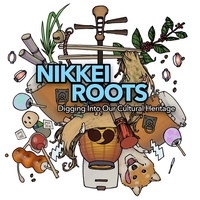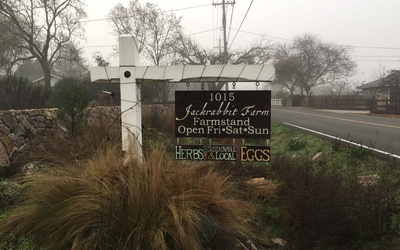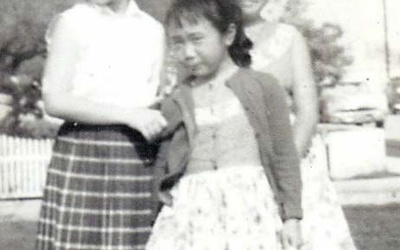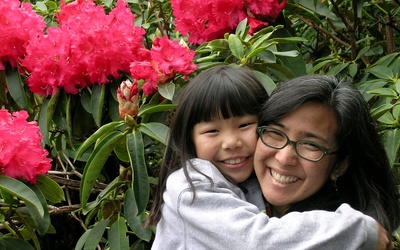Nikkei Chronicles #7—Nikkei Roots: Digging into Our Cultural Heritage

Stories in the Nikkei Chronicles series have explored many of the ways that Nikkei express their unique culture, whether through food, language, family, or tradition. For this edition, we are digging deeper—all the way down to our roots!
We solicited stories from May to September of 2018 and received 35 stories (22 English; 1 Japanese; 8 Spanish; and 4 Portuguese) from individuals in Argentina, Brazil, Canada, Cuba, Japan, Mexico, Peru, and the United States. For this series, we asked our Nima-kai community to vote for their favorite stories and an editorial committee to pick their favorites. In total, four favorite stories were selected.
Here are the selected favorite stories.
Editorial Committee’s Selections:
- ENGLISH:
Sharing Heart Beats
By Mori Walts
- JAPANESE:
The Tea of Soul from Aizuwakamatsu Revived After 150 Years
By Nao Magami
- SPANISH:
The Japan Inside Me
By Akemi Figueredo Imamura
- PORTUGUESE:
Crossing the World
By Heriete Setsuko Shimabukuro Takeda
Nima-kai selection:
- 27 stars:
The Mochitsuki Tradition in the Hikari Group of Londrina, Paraná
By Alba Shioco Hino, Nilza Matiko Iwakura Okano, Kiyomi Nakanishi Yamada
Stories from this series
My Nikkei Tradition
Sept. 13, 2018 • Kate Iio
Ever since I was six years old, my mom and dad always took my older sister and I to the Nisei Week festival in Little Tokyo of Downtown Los Angeles. I remember my parents buying my sister and I fresh dango and korokke for the first time from one of the many vendors lined up along the village. The sweet sauce from the dango followed by the savory tonkatsu sauce from the korokke went so perfectly hand-in-hand that it became …
The Tea of Soul from Aizuwakamatsu Revived After 150 Years
Sept. 7, 2018 • Nao Magami
History of Wakamatsu Tea and Silk Farm About 150 years ago in 1869, the first group of approximately 22 immigrants to the U.S. mainland arrived in Gold Hill, California, after Aizuwakamatsu lost the Boshin Civil War. (The first immigrants to Hawaii arrived in 1868.) This group was the first to come from Aizuwakamatsu, led by a Prussian named John Schnell, seeking a new land in America. With his Japanese name Buhei Hiramatsu, John Schnell was a merchant who sold weapons to …
A Promise
Aug. 23, 2018 • Mary Sunada
Almost 60 years ago, a promise was made by a girl who was ten years old. I was that little girl and remembered that day very clearly. My best friend, Leslie, came over to play and told me a secret. She said that the man I called “Pop” was not my biological father. I felt hurt and anger towards my mom because I heard it first from a friend. Now, I understood why I had emotions of not belonging, being …
Japanese Hair: A Rambling Exploration of its Cultural, Familial, and Personal Roots
Aug. 13, 2018 • Danielle Yuki Yang
When I enter that “nonki” (as my grandma jokingly calls it) state of being where I sort of zone out of the present time and space, I often find myself ruminating upon the insignificant features of myself. I self-consciously think about the parts of myself I don’t like, which currently is the peeling skin on the back of my legs from a bad sunburn I acquired a couple of weeks ago after entering, you guessed it, my nonki persona, and …
Becoming Half
July 30, 2018 • Lila Klopfenstein
My mother is Japanese and my father is American. I am half-Japanese. Ha-fu. Some people dispute this term. They call mixed-race people ‘doubles’, to reflect that fact that both ethnicities exist at once. I do not identify as ‘double’. I identify as American. I know nothing else. My Japanese half is a hazy cloud of Japanese TV shows, the smell of tatami and fish, and a smattering of random words, all of which were slowly fading from memory. The older …
The Power of Dance for Social Advocacy
July 16, 2018 • Vanessa Kanamoto
In spring 2017, I decided with the recent political climate that I could no longer wait for someone else to “do something.” At the time I was a dance graduate student so I decided to choreograph a dance entitled Shikata ga nai at the University of California, Irvine. Shikata ga nai is a Japanese phrase translating to “it cannot be helped.” This was an expression used by many Japanese people when faced with the injustice of being detained in internment …











































